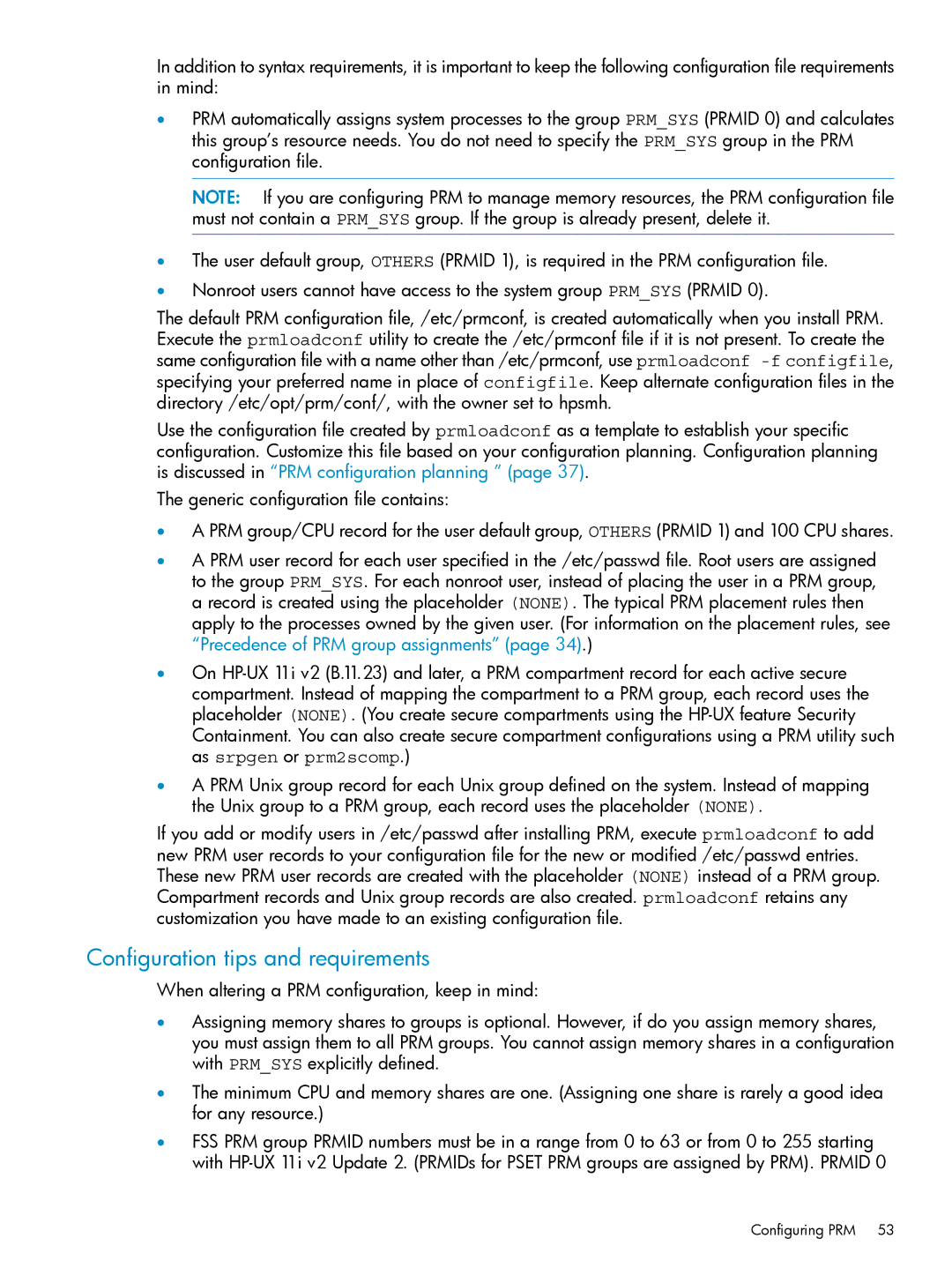In addition to syntax requirements, it is important to keep the following configuration file requirements in mind:
•PRM automatically assigns system processes to the group PRM_SYS (PRMID 0) and calculates this group’s resource needs. You do not need to specify the PRM_SYS group in the PRM configuration file.
NOTE: If you are configuring PRM to manage memory resources, the PRM configuration file must not contain a PRM_SYS group. If the group is already present, delete it.
•The user default group, OTHERS (PRMID 1), is required in the PRM configuration file.
•Nonroot users cannot have access to the system group PRM_SYS (PRMID 0).
The default PRM configuration file, /etc/prmconf, is created automatically when you install PRM. Execute the prmloadconf utility to create the /etc/prmconf file if it is not present. To create the same configuration file with a name other than /etc/prmconf, use prmloadconf
Use the configuration file created by prmloadconf as a template to establish your specific configuration. Customize this file based on your configuration planning. Configuration planning is discussed in “PRM configuration planning ” (page 37).
The generic configuration file contains:
•A PRM group/CPU record for the user default group, OTHERS (PRMID 1) and 100 CPU shares.
•A PRM user record for each user specified in the /etc/passwd file. Root users are assigned to the group PRM_SYS. For each nonroot user, instead of placing the user in a PRM group, a record is created using the placeholder (NONE). The typical PRM placement rules then apply to the processes owned by the given user. (For information on the placement rules, see “Precedence of PRM group assignments” (page 34).)
•On
•A PRM Unix group record for each Unix group defined on the system. Instead of mapping the Unix group to a PRM group, each record uses the placeholder (NONE).
If you add or modify users in /etc/passwd after installing PRM, execute prmloadconf to add new PRM user records to your configuration file for the new or modified /etc/passwd entries. These new PRM user records are created with the placeholder (NONE) instead of a PRM group. Compartment records and Unix group records are also created. prmloadconf retains any customization you have made to an existing configuration file.
Configuration tips and requirements
When altering a PRM configuration, keep in mind:
•Assigning memory shares to groups is optional. However, if do you assign memory shares, you must assign them to all PRM groups. You cannot assign memory shares in a configuration with PRM_SYS explicitly defined.
•The minimum CPU and memory shares are one. (Assigning one share is rarely a good idea for any resource.)
•FSS PRM group PRMID numbers must be in a range from 0 to 63 or from 0 to 255 starting with
Configuring PRM 53
